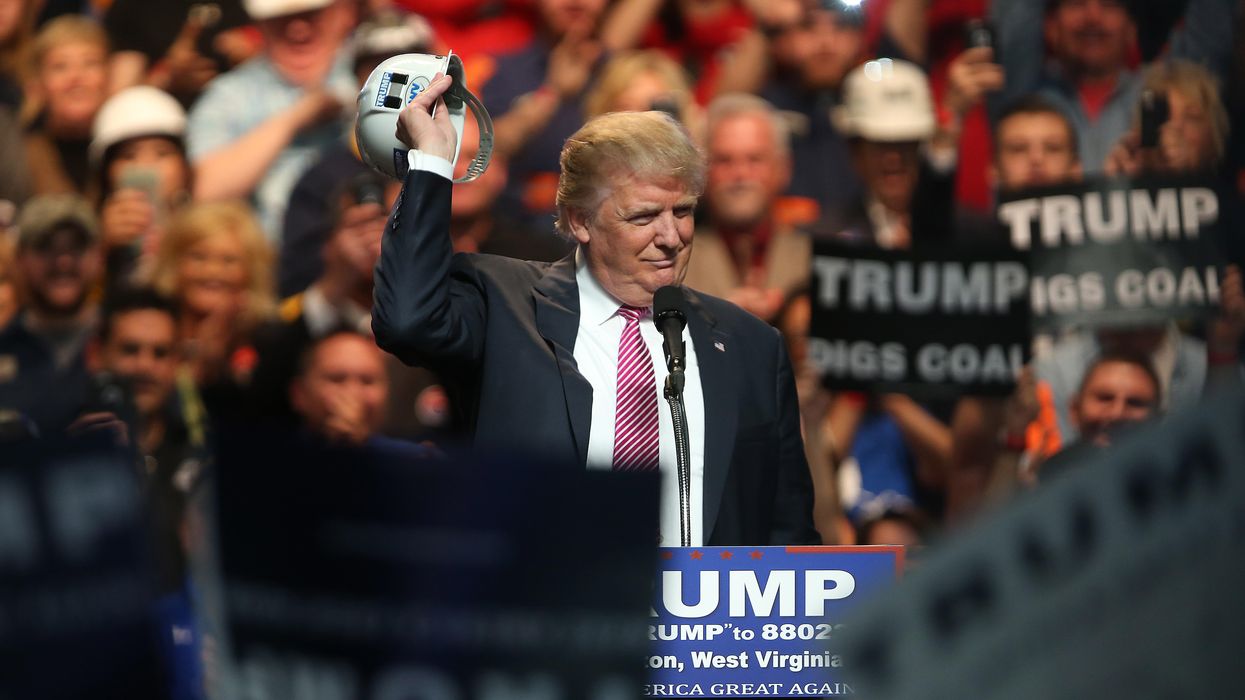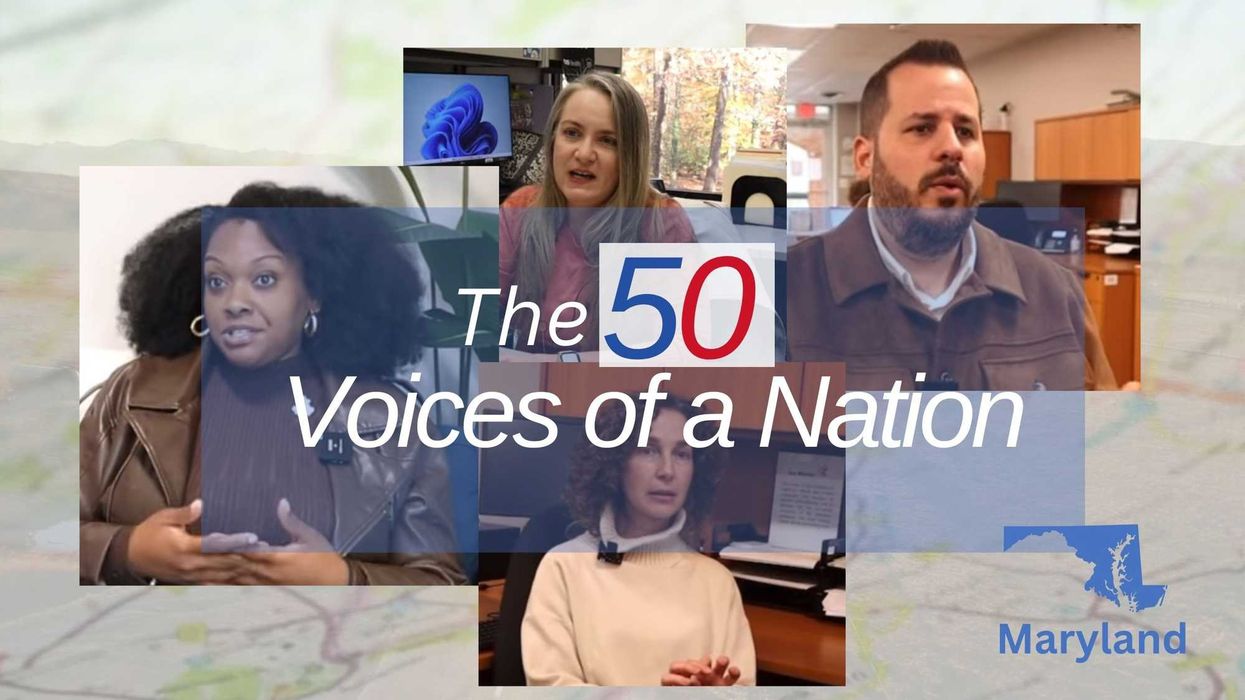Goldstone’s most recent book is "On Account of Race: The Supreme Court, White Supremacy, and the Ravaging of African American Voting Rights.
Not uncommon these days is to see a pickup truck driving around with a giant American flag flying from one side of the tailgate and an equal-sized Gadsden flag, which depicts a coiled rattlesnake and the phrase “Don’t Tread On Me,” from the other. Another frequent sight is a bumper sticker or window decal featuring some variation of Tom Paine’s famous quote decrying the “sunshine patriot.”
Other variations abound, all evoking the good old days during and after the Revolutionary War, when citizen soldiers were valued patriots, freedom reigned and the heavy boot of oppressive government was not planted on working people’s throats. That most of those proclaiming these sentiments are fervent supporters of Donald Trump and the Trumpublican Party is not at all a coincidence.
That Trump, an amoral narcissistic profiteer, has become a rallying point for the working class — which he has spent the better part of his life disparaging, stiffing out of money and swindling — could not be more of an irony. If his working-class supporters had spent some time learning what actually transpired during the Revolutionary period they are evoking with such nostalgia, they might decide that their loyalties would be better directed elsewhere.
Today’s right-wing patriots are correct that it was their class — yeoman farmers, artisans, and other ordinary people ... many of whom were immigrants — that was the backbone of the Continental Army, without whom George Washington and other leaders would have had no one to fight alongside. They froze and starved at Valley Forge, left bloody footprints in the snow on the trek to cross the Delaware, and abandoned their farms and families, sometimes for years, in the pursuit of the freedom, liberty and prosperity that had been promised to them.
And how were these often unpaid heroes treated by the leaders of a grateful nation when they came home to find themselves burdened by crushing debt and their property in ruins?
Abysmally.
The war had ignited a severe financial crisis in which a good deal of fertile land had been rendered unusable to farmers, British markets had been closed off, British shippers were prohibited from buying American-built ships, the war debt was immense, and the gold and silver required to pay off most individual debt was in extremely short supply. As a result, the gross national product plummeted while foreclosures and sentences to debtors’ prisons skyrocketed. Many of those impacted were army veterans, destitute despite being promised both back pay and pensions by some of the very people now taking their land.
To restore state treasuries, massive tax increases were introduced and the nation soon descended into creditor and debtor classes, neither of which had anything good to say about the other, especially when creditors resisted debtors' calls to issue paper money to ease repayment. Paper money would, of course, depreciate the value of the underlying currency, but would allow many indebted farmers to maintain title to their land.
To the debtors, opponents of paper money were “flint-hearted misers who were lying in wait to buy our lands [at auction] for less than a quarter of their real value.” Creditors saw debtors as having brought their misfortune on themselves through indolence, sloth and the willingness to live “upon the sweat of their neighbors’ brows.”
Massachusetts came to epitomize the nation’s divide. On the Atlantic Coast lay Boston and the prosperous, cosmopolitan, mercantile East, where shippers such as John Hancock and James Bowdoin, two extremely rich speculators with egos to match — the Donald Trumps of post-revolutionary America — grew wealthier by the day. Inland, away from the ports, was the agrarian West, where gruff, laconic, debt-ridden farmers — the pickup truck owners — were regularly hauled into court to be deprived of their land or sent to prison.
Gov. Bowdoin ignored the westerners’ plea to issue paper money. (He and Hancock handed the governorship back and forth for the entire decade.) Bowdoin, unwilling to part with a cent, had no intention of adopting a monetary system that would effectively write down debts by as much as 90 percent.
Finally, in June 1786, the westerners’ frustrations boiled over and some took up arms against the ruling elite. They initially confined themselves to shutting down courthouses to prevent creditors from pressing claims but soon grew to what seemed a formidable force, determined to overthrow a state government they saw as a tool of the rich. A similar protest began in neighboring New Hampshire and threatened to spread to other states where debt was crushing yeoman farmers and other artisans.
After Congress refused to bankroll a military response, Bowdoin and his fellow creditors approached Massachusetts-born Benjamin Lincoln, a Continental Army general turned land speculator. Lincoln “went immediately to a club of the first characters in Boston, who met that night and suggested to them the importance of becoming loaners of a part of their property if they wished to secure the remainder.” The plea, described as “very persuasive,” garnered more than £6,000 in a week.
By the end of January 1787, the leading coastal merchants had contributed enough to fund an army of 3,000 to march against less than 1,500 poorly armed rebels, now known as Shays Men for Daniel Shays, a 49-year-old former captain in the Continental Army who had fought at Bunker Hill and Lexington and Concord.
After a disastrous battle at a federal arsenal in Springfield, where the rebels had hoped to supplement their meager supply of arms, Lincoln’s force ran down the stragglers and by the end of February it was all over. Some rebels were jailed, a few hanged, and the rest disarmed and sent home. Shays himself fled to Vermont, which, not yet in the Union, was technically a foreign country.
In the end, Shays’ Rebellion had not amounted to much. Nevertheless, the prospect of an armed uprising terrified both the creditor class in the North and the plantation class in South, where rebellious farmers might also incite slave revolt. The growing unrest emphasized the need for a stronger national government to prevent wholesale insurrection.
And so, nationalists such as Madison, Hamilton, and John Dickinson were able to persuade Congress to call a national convention, set for May in Philadelphia, to strengthen the fatally weak Articles of Confederation. What they produced not only introduced a bit of democracy — only the upper classes had any real say in choosing the nation’s leaders — but also empowered the government to put down another populist uprising, should one arise.
And so, those who wish so ardently for a return to the good old days might bear in mind that, like the Trump crowd, the Bowdoins and Hancocks also made grandiose promises to those who contributed the most and were recompensed the least. Those promises were broken, as Trump and his ilk’s surely will be as well.



















